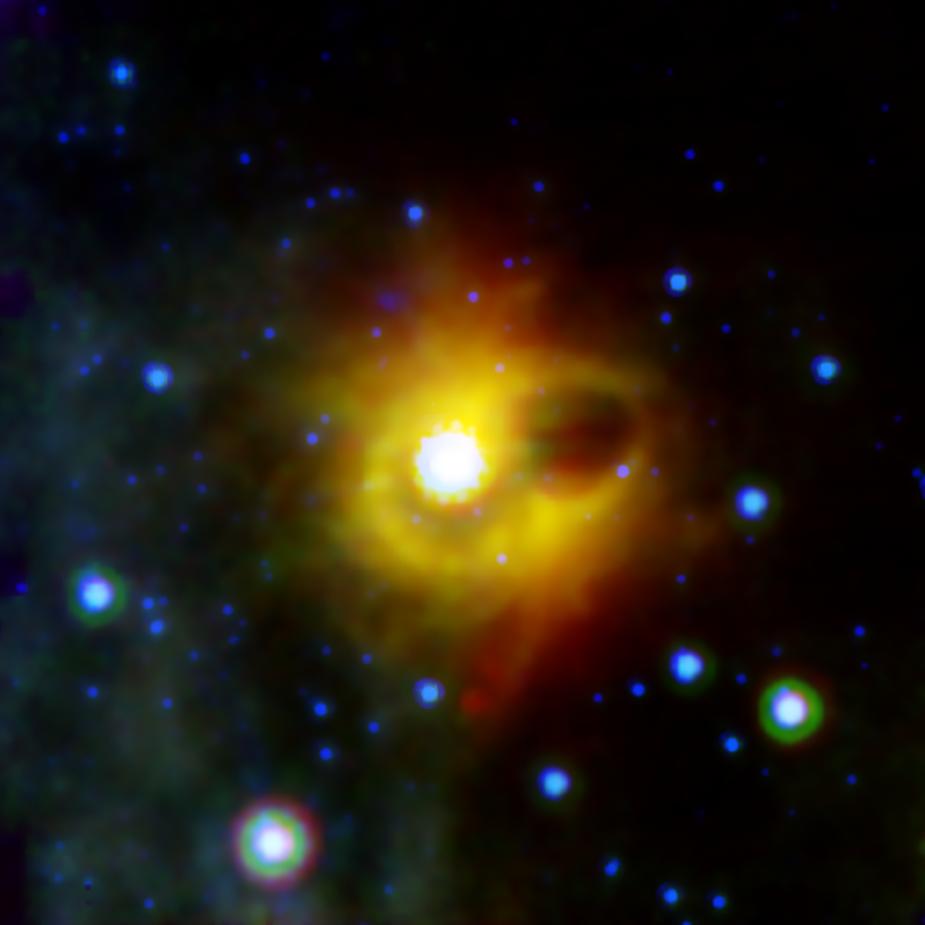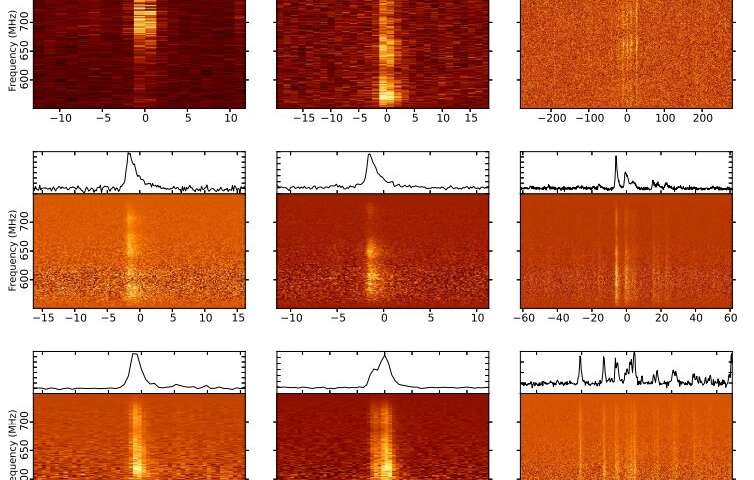Magnetar May Hold Clues to the Mystery of Fast Radio Bursts

Astronomers are investigating a radio-burst emission from a magnetar that reactivated last year, and have so far found that its burst activity is both strong and narrow. They suspect that further study of the burst could reveal new information about fast radio bursts.
Magnetars are neutron stars with extremely strong magnetic fields (over a quadrillion times stronger than Earth's magnetic field). Scientists first spotted the magnetar XTE J1810−197 after an X-ray outburst in 2003, and in 2004, researchers detected a radio emission from the source. The magnetar produced the first transient radio emission ever detected by scientists. But after a few years of emitting variable radio emissions, the magnetar went quiet in 2008.
XTE J1810−197 reactivated last year in December 2018. Scientists detected a bright, pulsed radio signal at 1.52 gigahertz (GHz) coming from the magnetar, the second radio outburst observed from this source. A strange and exciting observation, scientists launched an investigation of the object, studying it at low radio frequencies using the Giant Metrewave Radio Telescope (GMRT).
Related: The Strangest Black Holes in the Universe

The team, led by Yogesh Maan of the Netherlands Institute for Radio Astronomy, found that radio bursts from this magnetar are between 1.0 and 4.0 ms wide at 650 megahertz (MHz). They also found that this width narrows at 1,360 MHz. The team also observed that the magnetar's magnitude of brightness has rapidly decreased since the burst was detected in 2018. So not only is the recent burst activity of XTE J1810−197 relatively narrow, it is also relatively strong, the researchers found.
"The bursts exhibit spectral structures which cannot be explained by interstellar propagation effects," the team of astronomers wrote in the paper describing their findings, which was published Aug. 12 in the preprint journal arXiv, stating that the bursts from XTE J1810−197 don't disseminate in space as expected.
"While the spectral structures are particularly noticeable in the early phases of the outburst, these seem to be less prominent as well as less frequent in the later phases, suggesting an evolution of the underlying cause of these spectral structures.
Get the Space.com Newsletter
Breaking space news, the latest updates on rocket launches, skywatching events and more!
"These structures might indicate a phenomenological link with the repeating fast radio bursts which also show interesting, more detailed frequency structures," the astronomers added.
The team plans to investigate the emission from XTE J1810−197 further at higher frequencies. They hope that this will answer their question of whether the magnetar is somehow linked to repeating fast radio bursts.
- Spaced Out! 101 Astronomy Images That Will Blow Your Mind
- The 11 Biggest Unanswered Questions About Dark Matter
- Stephen Hawking's Most Far-Out Ideas About Black Hole
Follow Chelsea Gohd on Twitter @chelsea_gohd. Follow us on Twitter @Spacedotcom and on Facebook.
Join our Space Forums to keep talking space on the latest missions, night sky and more! And if you have a news tip, correction or comment, let us know at: community@space.com.

Chelsea “Foxanne” Gohd joined Space.com in 2018 and is now a Senior Writer, writing about everything from climate change to planetary science and human spaceflight in both articles and on-camera in videos. With a degree in Public Health and biological sciences, Chelsea has written and worked for institutions including the American Museum of Natural History, Scientific American, Discover Magazine Blog, Astronomy Magazine and Live Science. When not writing, editing or filming something space-y, Chelsea "Foxanne" Gohd is writing music and performing as Foxanne, even launching a song to space in 2021 with Inspiration4. You can follow her on Twitter @chelsea_gohd and @foxannemusic.









